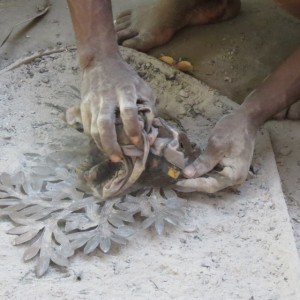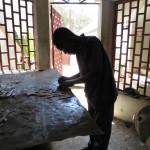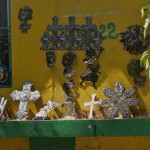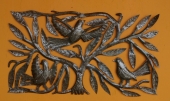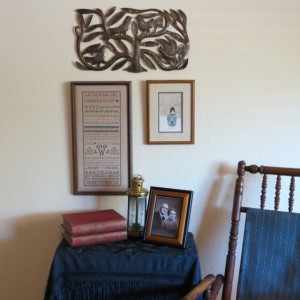The Tree of Life, Indeed!
The Tree of Life is a very popular design. Our artists make them in astonishingly different and creative ways and our customers buy them in all their iterations with great enthusiasm. To both groups, they are representative of a number of things; the beauty of nature, the interconnectedness of living beings, and life-giving abundance. Yet there is tremendous irony about trees in Haiti. There really aren’t very many of them left.
Much has been written about deforestation in Haiti. The facts as they are presented in such online sources as Eden Projects and Triple Pundit are indeed pretty grim: Haiti has become 98% deforested and what little remains is disappearing at a rate of 30% per year. Contributing hugely to this deforestation rate is the practice of using nearly every bit of available wood for fuel. In a country with no natural gas or petroleum resources, wood is the logical choice for all cooking and heating in a poor nation whose population can afford little else. It’s a devilish problem.
Eden Projects is a charitable organization that seeks to alleviate poverty by employing locals in countries such as Nepal, Madagascar, and Haiti to plant trees. Reforestation efforts aim to reduce soil and waterway degradation, which are the first steps in boosting the land’s productivity and revitalizing the agricultural sector of the economy. It is a single, two-pronged solution to pressing economic and environmental emergencies .
One of the trees that Haitians have been hired to plant throughout the country is a variety of mesquite. Known as “bayawonn” in Haitian creole, the scraggly-looking tree is already yielding some encouraging results. Bayawonn is a particularly hardy species of mesquite that is able to withstand rough terrain, poor soil, and periods of high heat and low rainfall. Additionally, it is fast-growing – an important characteristic in establishing a tree canopy under which other plants may grow and flourish. They are particularly adept at nitrogen transfer, which it accomplishes by absorption from the air and sending it to its roots. The nitrogen is then released into the soil, thereby enriching it for other nearby plants. And there’s more! Bayawonn pods can be used as a food source for livestock while the beans can be ground into flour and made into a hearty, healthful bread. Truly, there is much to be sung in praise of the bayawonn planting program in both short-term benefits and sustainability.
In a sense, then, the Tree of Life may have a specific form. Despite all of it’s renditions conceived by artists and executed with great flourishes and embellishments, the Tree of Life in Haiti may, in actual fact be the scruffy, humble bayawonnn.
Created by Linda for It’s Cactus

